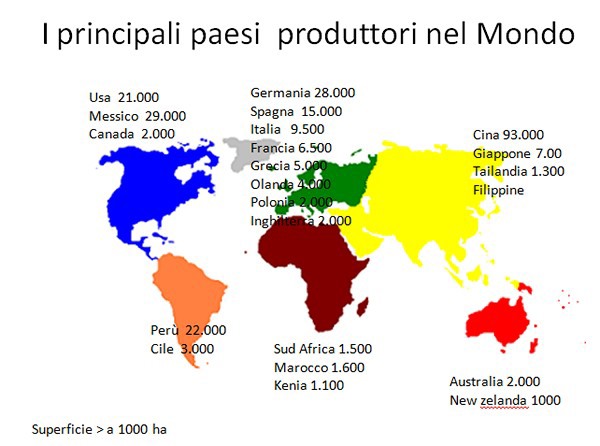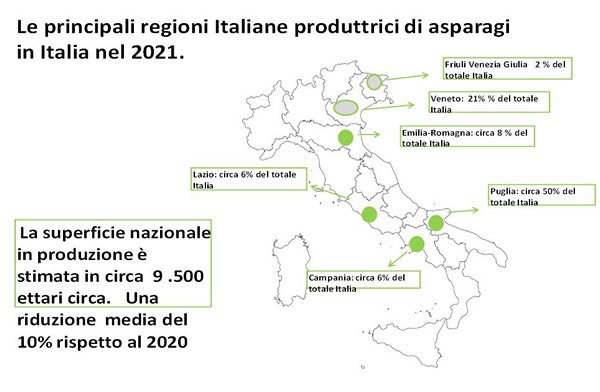In the early 2000s, asparagus was grown on over 300 thousand hectares on a global level, leading to overproduction.
"Now that there are approximately 215thousand hectares, we are lacking produce. Forecasts seem optimistic up to 270 thousand hectares," reported expert Luciano Trentini during IAD, the international asparagus day.
"According to forecasts, in order to meet the global demand for asparagus, crops should cover between 270,000 and 280,000 hectares. The leading producer is China with 93 thousand hectares, followed by Mexico with 29 thousand hectares and Peru with 22 thousand hectares."

Asparagus in Italy
In Italy, crops cover around 9500 hectares, mostly located in Apulia (50%), followed by the Veneto (21%) and Emilia Romagna (approx. 8%).
Asparagus cultivation is maintaining a positive trend, considering the increasing demand for all types - green, white and purple. The foreign demand for green asparagus, especially organic ones, is also growing.
Over the past two years, investments have slowed down, especially in southern Italy, because of the problems generated by the Covid pandemic. The drop in cultivated areas is due to both agronomic (crop techniques and varietal choice) and environmental (unfavorable weather characterized by dry springs and frequent frost) reasons, which have had a negative affect on the income of businesses.

Problems in Apulia
The situation is difficult during this campaign as well, especially in Apulia. The temperature drops and abundant rain is once again delaying production and compromising yields. Prices are good at the moment due to the lack of produce, but a drop is feared should produce from both northern and southern Italy become available at the same time because of the weather.
In 2020, the pandemic led to the closing of bars, restaurants and canteens (H&R and catering): this contributed to a reduced consumption of fresh, preserved and frozen asparagus. Only retail chain sales and exports remained somewhat normal. What is more, the difficulty in sourcing labor has led growers to reduce investments and not harvest young crops.
Stable hectares
In Italy, crops are estimated to cover 9,500/9,800 hectares this year, to which we must add 1000 hectares of young crops not yet productive. White asparagus represent little less than 20% of the entire domestic production and can be found only in two regions - the Veneto and Friuli Venezia Giulia. Purple asparagus (Violetto d'Albenga being the best known) are grown almost exclusively in Liguria.
 Luciano Trentini
Luciano Trentini
Apulia is the leading producer of green asparagus with over 5,000 hectares, followed by the Veneto with 2000 ha of green and white (70%) asparagus, Emilia-Romagna with around 750 hectares and Lazio with 500 hectares. In Campania, there are over 400 hectares of green asparagus, grown mainly in greenhouses. In Friuli Venezia Giulia, there are around 200 hectares, 70% of which are destined to white varieties. This year, cultivated areas are 10% lower than in 2020.
The south saw the starkest decrease at almost 15%, while the production in minor regions, Campania and the North has remained stable. There is a slight increase in the production of early asparagus heated with geothermal water in the Veneto, Friuli Venezia Giulia and Lazio, though tests are being carried out to use water heated using renewable sources and even electricity.
